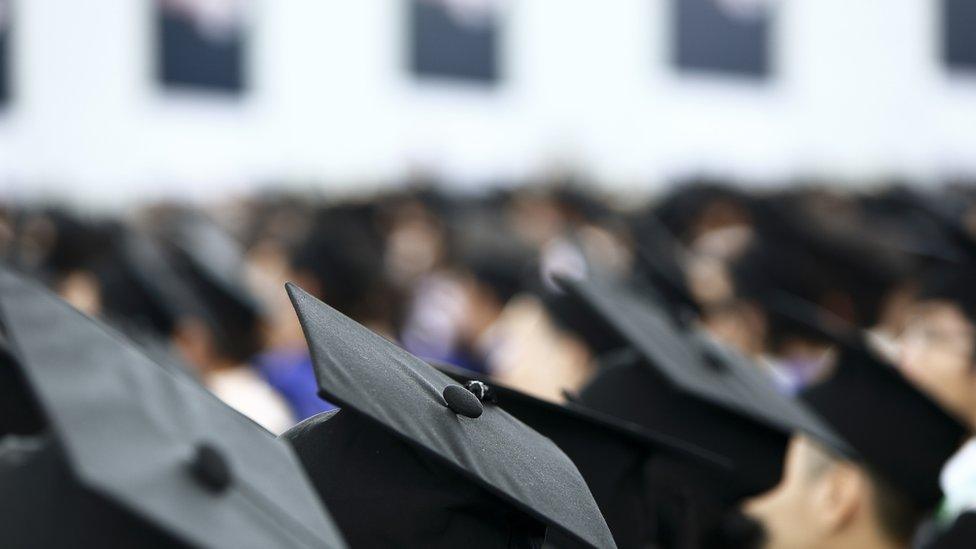Student doubts rise over university value for money
- Published
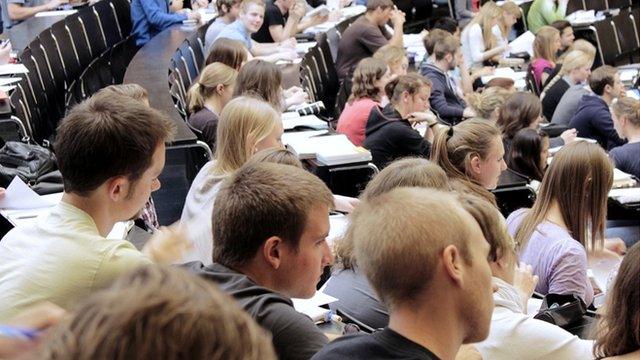
Students are less convinced they are getting good value and want longer teaching hours
Only about a third of UK students think that they get good "value for money" from their university course, according to an influential annual survey.
The survey of 15,000 students shows perceptions of "good value for money" have fallen to 37% from 53% in 2012.
The survey suggests that a lack of teaching hours for some courses is causing this sense of disappointment.
Universities Minister Jo Johnson says universities must respond to students with a "sharper eye for value".
The Student Academic Experience Survey, produced by the Higher Education Policy Institute and the Higher Education Academy, shows a gap between high levels of satisfaction with courses and falling levels of students believing that they are getting value.
The lowest perception of value for money is in England, at about 32%, where tuition fees are up to £9,000 per year, while in Scotland, where there are no fees, the figure for getting good value is about 65% of students.
The government is proposing that fees in England should be increased above £9,000, if universities can show they have high quality teaching.
But the survey shows very high levels of opposition from students to raising fees.
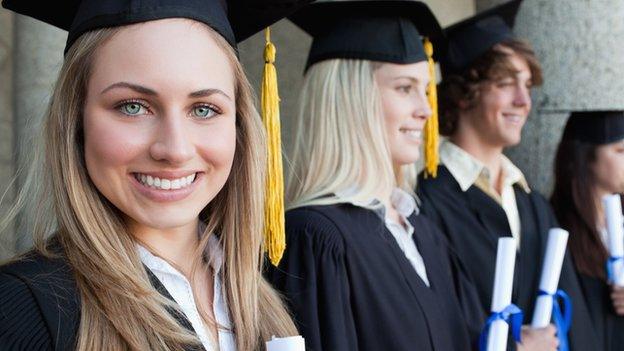
There are more women than men in almost all UK universities
The study shows student satisfaction is linked with the quality of teaching staff - and students put a higher priority on academics' ability to teach than research activity.
A sense of value for money among students seems to be connected to contact hours with staff, in seminars and lectures.
Courses with low levels of contact hours, such as history, English, languages and social sciences are rated as being less good value, compared with physical sciences, engineering and medicine, which have longer hours of structured study.
Nick Hillman, director of the Higher Education Policy Institute, said "students really, really care about contact hours".
There are courses with only eight hours a week or lower - and the study shows that in the four years since tuition fees increased in England, the number of timetabled contact hours had fallen slightly.
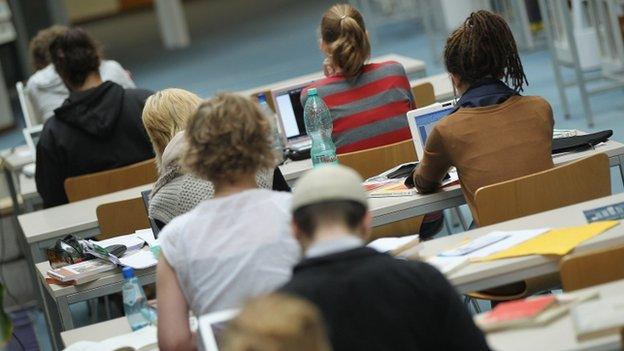
Figures from Ucas show that white students are under-represented in almost half of universities
When students are in class, only about a third of the hours on average are spent in groups of less than 15.
The study also highlighted that ethnic minority students have lower levels of satisfaction.
A reason suggested for this was that Asian students in particular were more likely to live at home with their parents than in student accommodation - and students living at home tended to be less integrated with university life and were more likely to drop out.
If tuition fees are to rise above £9,000, Mr Hillman said the survey indicates that "universities must show how any extra fee income will directly benefit their students".
The universities minister has called for more transparency in university admissions, with plans to make universities publish more data about who applies and who gets places, in a bid to improve social mobility.
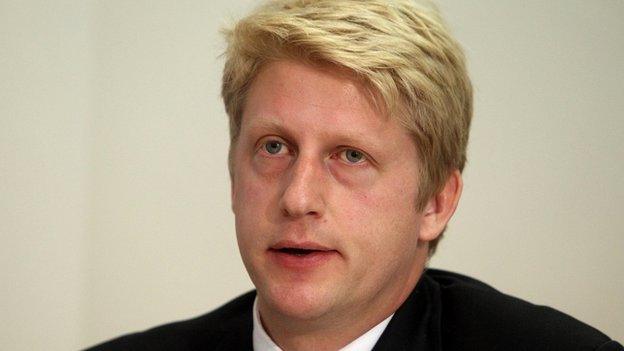
Jo Johnson wants universities to publish more admissions data
In advance of this, Ucas, the university admissions service, has published information about applications and places, looking at gender, ethnicity and social background.
This confirms the trend for women to be more likely to go to university than men - with nine out of 10 universities admitting more women than men.
There are higher rates of university entry for ethnic minority students - and the analysis shows that "white students are under-represented at just under half of universities".
If white students gained places at the same average rate of ethnic minorities, there would be another 40,000 students, said Mark Corver, director of analysis and research for Ucas.
In terms of social background, the analysis shows that for 18-year-old applicants to Oxford last year, 1,205 places went to students from the top fifth most advantaged areas, while 70 places went to those living in the fifth most disadvantaged.
There were more places gained by this top fifth of most privileged group of applicants than all the other four fifths of households put together. And overall, for this age group, there were 35 black students getting places compared with 1,875 white applicants and 130 Asian.

Universities will have to show more information about the social backgrounds of their intakes
In Cambridge, for 18-year-old applicants, there were 1,260 places gained by students in the top fifth most privileged areas, compared with 65 places for those from the least advantaged. There were 30 black students gaining places compared with 270 Asian and 1,785 white students.
Durham and St Andrews also recruited more 18 year olds from this top fifth of advantaged households than the other four fifths combined.
There are no breakdowns by private or state education or by individual courses.
"We have been calling on the higher education sector to publish much more information about their admissions process, and I welcome these first voluntary steps by those who have taken part," said Mr Johnson.
"This is a good start, but by legislating for a new transparency duty we're now ensuring that there will be a clear requirement on all universities to release more information about their admissions process, and real incentives on all institutions to go further and faster to promote social mobility."
- Published16 May 2016
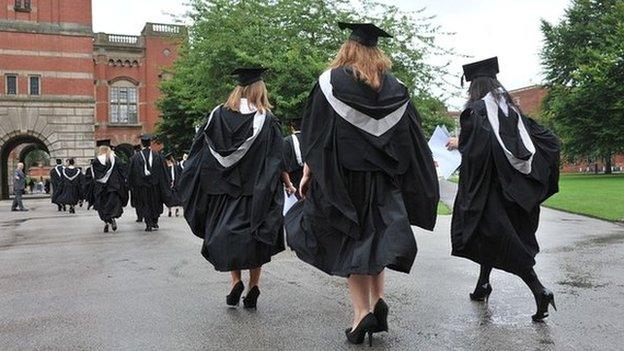
- Published9 March 2016

- Published12 May 2016
- Published9 September 2015
